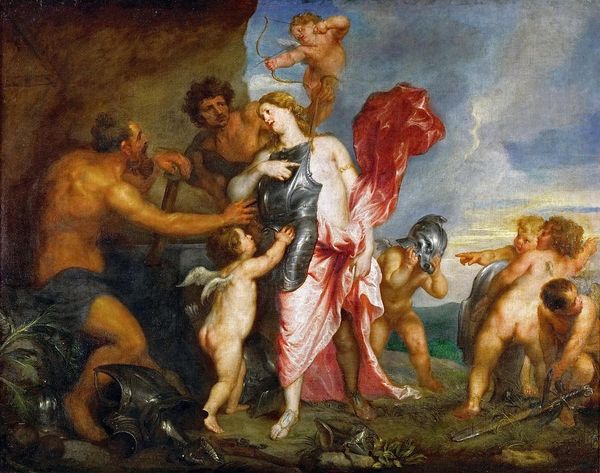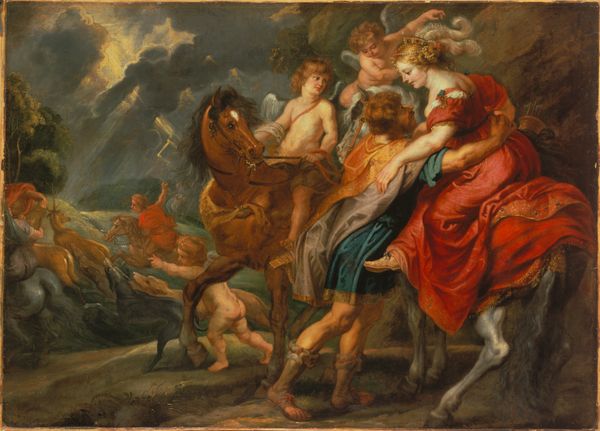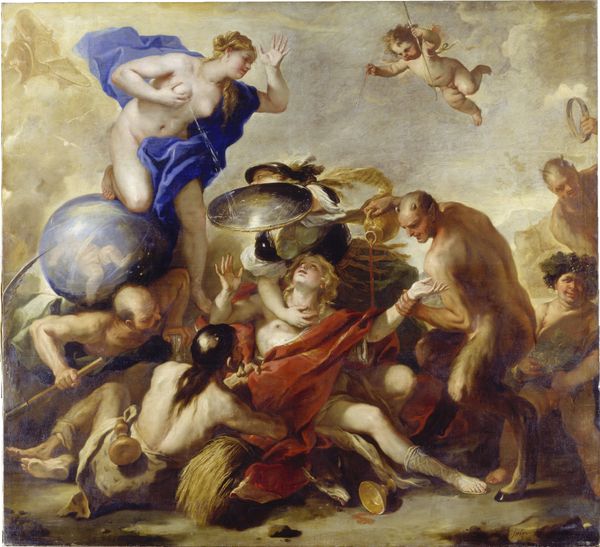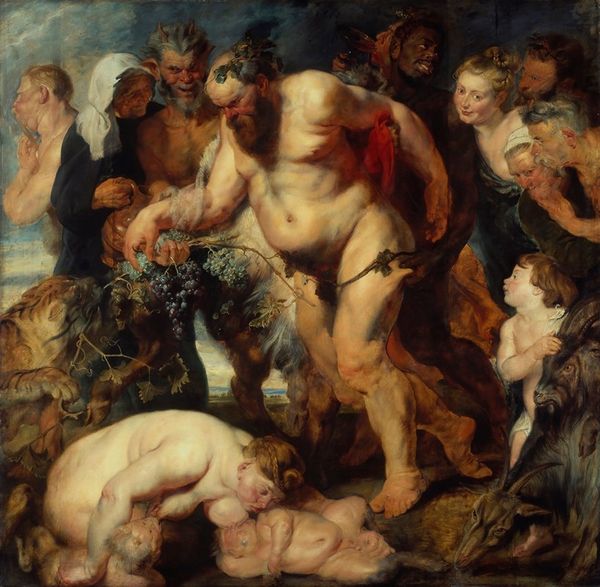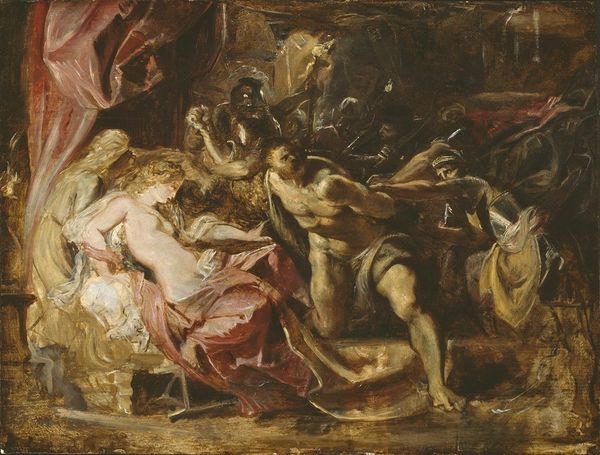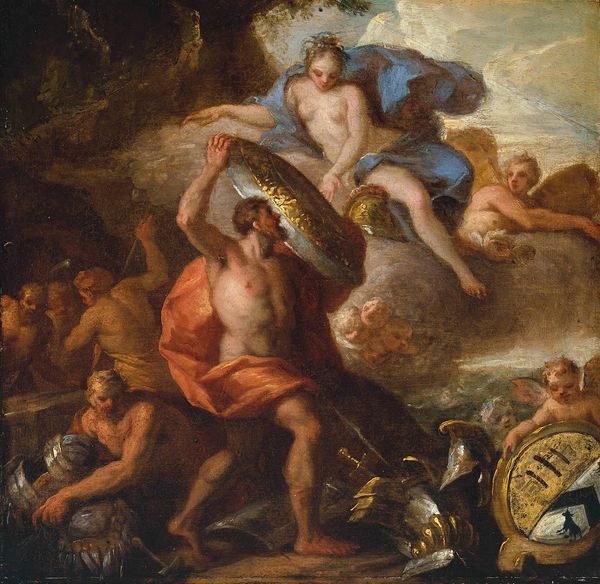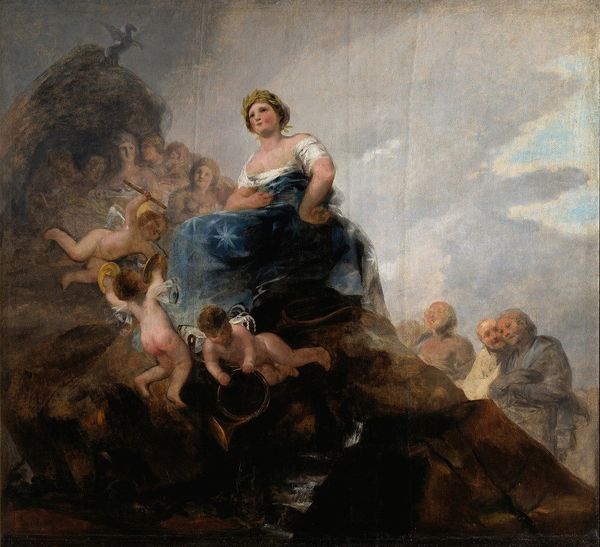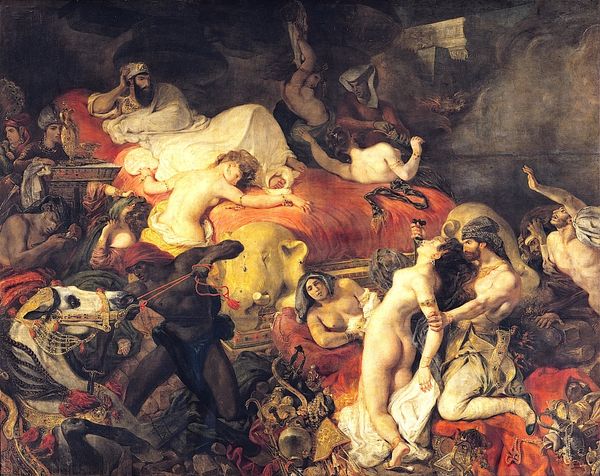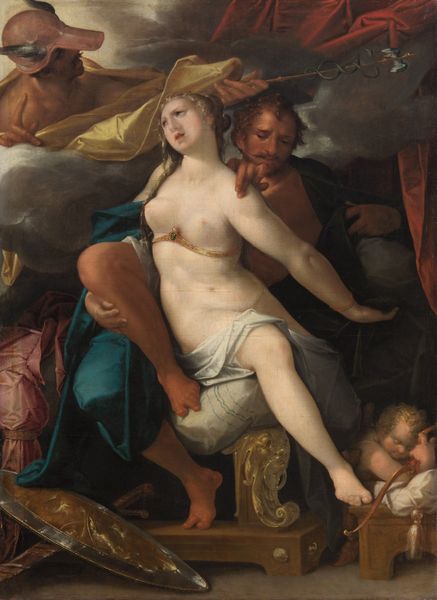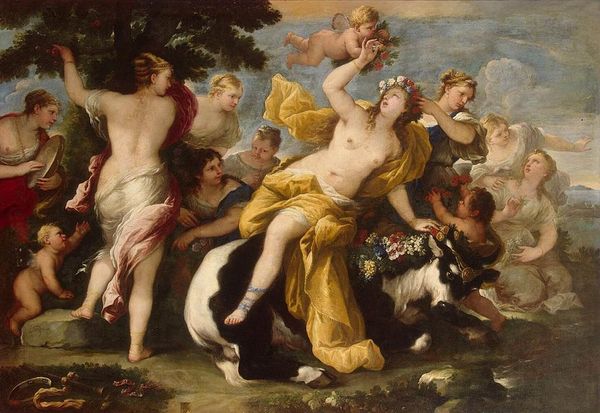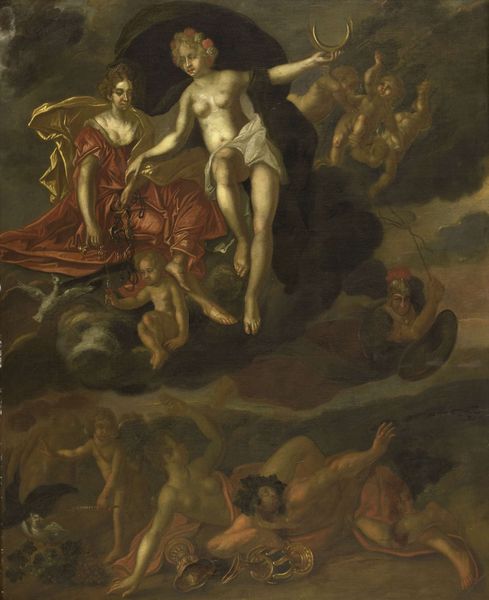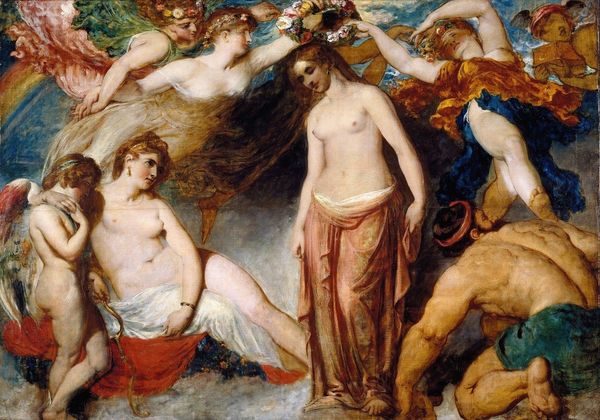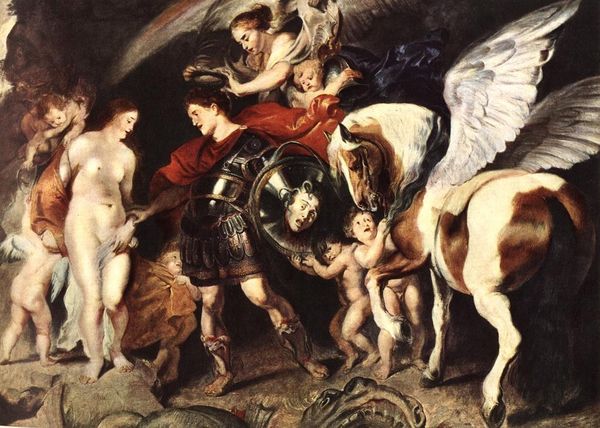
oil-paint
#
baroque
#
oil-paint
#
figuration
#
oil painting
#
mythology
#
history-painting
#
nude
Copyright: Public Domain: Artvee
Curator: Standing before us is Anthony van Dyck's oil painting, "Thetis receives the new armour for Achilles in Vulcan's forge," created between 1630 and 1632. A classic baroque depiction. What strikes you initially? Editor: Well, it's just wonderfully… theatrical. All this billowing fabric, muscular figures, and that sky practically exploding with cherubs! It feels like a divine soap opera, doesn’t it? Curator: In examining van Dyck’s process, the application of the oil paint interests me here; note the loose brushwork in the smoke, the implied labour. The armour being presented signifies not just protection but also status and divine craftsmanship. The power dynamics between the figures… it all speaks to a material-driven understanding of mythology. Editor: Yes, I suppose the armour itself, all cold steel against Thetis’s bare skin, really does represent the fatal intersection of destiny and mortality. Makes you wonder what it must feel like to know your son is destined to be a legend but also… to die young. Heavy stuff! I guess Van Dyck has captured the motherly dread! Curator: Consider also the setting, the active, volcanic forge: where does the artistic process meet the divine in this work? We must also contextualize this as a product of its time, patronage, workshop practices—how was value assigned to these material productions? Editor: I guess that is so analytical...but can't we imagine for a moment that Thetis is questioning her very existence! Doesn’t the light hitting her face tell that very story? Curator: Very much agreed... I suppose what really stays with me is understanding all those layers, understanding those baroque depictions—not just myth but material production—in trying to understand a larger story. Editor: Absolutely, so true. The artwork becomes alive again!
Comments
No comments
Be the first to comment and join the conversation on the ultimate creative platform.
